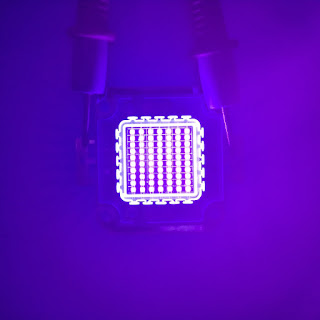UV LED Market worth $2.8 billion by 2028
The UV LED market is projected to grow from USD 1.2 billion in 2023 to USD 2.8 billion by 2028, registering a CAGR of 19.7% during the forecast period according to a new report by MarketsandMarkets.
Some of the significant factors contributing to the growth of the UV LED market include longer product lifetime of UV LED as compared to a conventional UV lamp, growing inclination toward eco-friendly products, stringent regulations regarding use of green products, raising concerns regarding safe drinking water in emerging nations, increasing demand for ultrapure water, and the advent of UV LED application in the automotive industry.
UV LEDs with a power output less than 1 W have gained popularity due to their cost-effectiveness, energy efficiency, versatility, and safety considerations. They are commonly used in various industries, such as healthcare, horticulture, printing, beauty, and more. In healthcare, lower-power UV LEDs are used to sterilize and disinfect medical equipment and surfaces. In horticulture, they promote plant growth and increase the production of certain compounds in plants. In printing, they cure and dry inks and coatings quickly. In the beauty industry, they are used in nail lamps to cure and dry nail polish.
Lower-power UV LEDs are also used in insect traps to attract and kill insects and in counterfeit detection to detect the fluorescent properties of certain materials under UV light. Another essential advantage of lower-power UV LEDs is their safety. UV light can harm human health and the environment. Lower-power UV LEDs emit less UV light, making them safer for use in applications where exposure to UV light is a concern. They are also easier to manage in terms of thermal management since they generate less heat than higher-power UV LEDs.
They are widely available and commonly used in various applications, which drives their production and availability. Additionally, these LEDs' lower cost and energy efficiency make them a cost-effective solution for applications that do not require high-power output. As new applications and markets emerge, the demand for UV LEDs with a power output less than 1 W is expected to continue to grow.
Some of the significant factors contributing to the growth of the UV LED market include longer product lifetime of UV LED as compared to a conventional UV lamp, growing inclination toward eco-friendly products, stringent regulations regarding use of green products, raising concerns regarding safe drinking water in emerging nations, increasing demand for ultrapure water, and the advent of UV LED application in the automotive industry.
UV LEDs with a power output less than 1 W have gained popularity due to their cost-effectiveness, energy efficiency, versatility, and safety considerations. They are commonly used in various industries, such as healthcare, horticulture, printing, beauty, and more. In healthcare, lower-power UV LEDs are used to sterilize and disinfect medical equipment and surfaces. In horticulture, they promote plant growth and increase the production of certain compounds in plants. In printing, they cure and dry inks and coatings quickly. In the beauty industry, they are used in nail lamps to cure and dry nail polish.
Lower-power UV LEDs are also used in insect traps to attract and kill insects and in counterfeit detection to detect the fluorescent properties of certain materials under UV light. Another essential advantage of lower-power UV LEDs is their safety. UV light can harm human health and the environment. Lower-power UV LEDs emit less UV light, making them safer for use in applications where exposure to UV light is a concern. They are also easier to manage in terms of thermal management since they generate less heat than higher-power UV LEDs.
They are widely available and commonly used in various applications, which drives their production and availability. Additionally, these LEDs' lower cost and energy efficiency make them a cost-effective solution for applications that do not require high-power output. As new applications and markets emerge, the demand for UV LEDs with a power output less than 1 W is expected to continue to grow.



No comments: